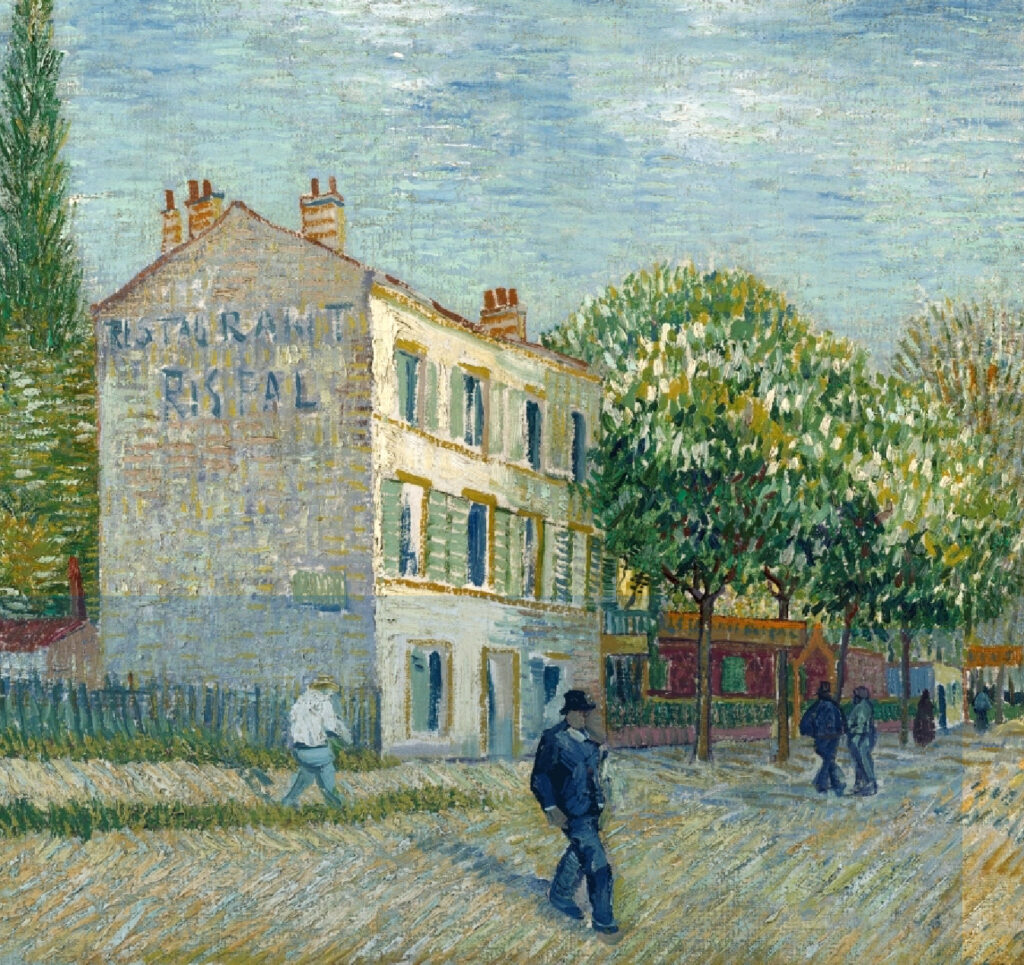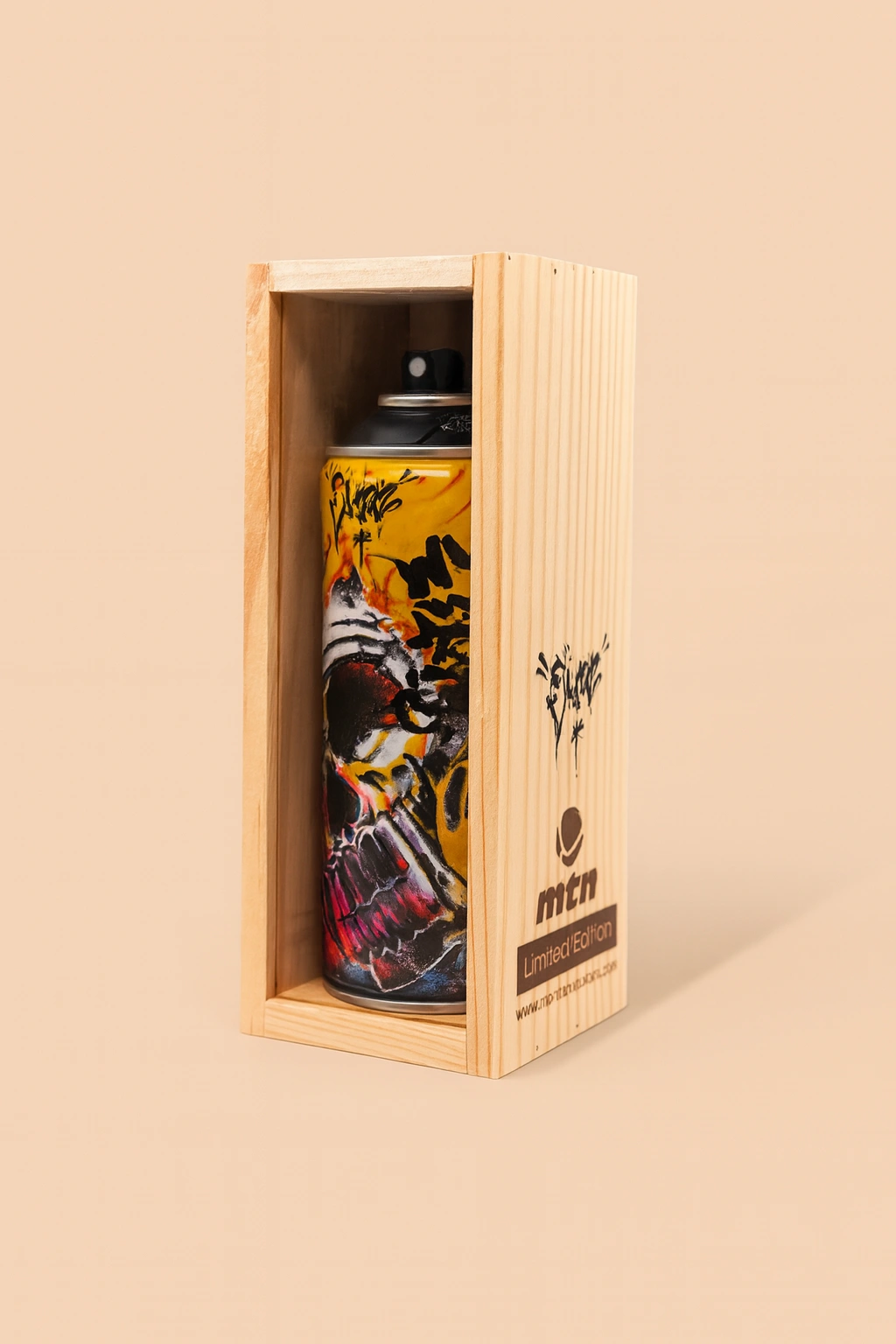Vincent van Gogh’s Restaurant Rispal at Asnières (1887) is an evocative representation of urban and working-class life during the artist’s time in Paris. Painted during his two-year stay in the French capital, this work reflects van Gogh’s fascination with café culture, working-class life, and his growing interest in new artistic styles, particularly the influence of pointillism. Through its vibrant palette, textural brushstrokes, and symbolic elements, the painting captures not only a specific location but also the atmosphere and social fabric of Paris’s industrial suburbs.
Van Gogh’s Paris Period (1886–1888)
Van Gogh moved to Paris in March 1886 and remained there until February 1888. This period marked a significant turning point in his artistic development. Before Paris, van Gogh’s works were characterized by somber tones and focused on rural subjects, reflecting his time in the Netherlands. However, his immersion in the bustling Parisian art scene brought a dramatic transformation to his style and subject matter.
Influence of Impressionism and Neo-Impressionism
In Paris, van Gogh encountered the works of Impressionists such as Claude Monet and Edgar Degas, as well as the burgeoning Neo-Impressionist movement led by Georges Seurat and Paul Signac. These artists introduced van Gogh to new techniques, such as the use of brighter colors, lighter brushstrokes, and innovative approaches to light and composition.
•Pointillism: Seurat and Signac’s pointillist method, which involved the use of small, distinct dots of color to create vibrant optical effects, had a noticeable influence on van Gogh.
•Color Theory: Van Gogh adopted a more vivid palette, emphasizing complementary colors to create contrast and vibrancy in his works.
Asnières: A Source of Inspiration
Located northwest of Paris, Asnières was an industrial suburb known for its factories, canals, and working-class population. For van Gogh, Asnières offered a blend of urban vibrancy and natural beauty. The area’s riverside scenes, bustling cafés, and industrial landscapes provided the artist with abundant inspiration.
Van Gogh’s Connection to Asnières
Van Gogh frequently visited Asnières to escape the intensity of Paris and immerse himself in its quieter, yet dynamic, environment. The suburb’s working-class culture and café life aligned with van Gogh’s interest in depicting the lives of ordinary people.
•Cafés as Social Hubs: In Restaurant Rispal at Asnières, van Gogh captures the essence of cafés as central gathering places for workers and residents. These establishments symbolized the intersection of labor, leisure, and social interaction in 19th-century Paris.
Analysis of Restaurant Rispal at Asnières
Van Gogh’s painting vividly portrays the façade of the restaurant, flanked by trees and set against a lively urban backdrop. Every detail reflects van Gogh’s evolving artistic style and his ability to infuse everyday scenes with emotional depth and energy.
Composition and Subject
The composition centers on the restaurant, identified by its name painted on the side of the building and displayed on a signboard between two prominent trees. The setting is straightforward, yet dynamic, capturing the daily rhythms of working-class life.
•Foreground Figure: The figure in the foreground, dressed in a blue smock, serves as a subtle self-reference. Van Gogh often wore similar clothing during this period, blending his identity with the working-class subjects he depicted.
•Trees and Nature: The two trees in the foreground create a sense of depth and frame the scene, directing the viewer’s gaze toward the restaurant and its surroundings.
Brushwork and Technique
Van Gogh’s brushwork in this painting demonstrates his experimentation with Neo-Impressionist techniques, particularly pointillism.
•Foliage and Texture: The foliage is rendered with small, uniform flecks of bright green and yellow, creating a vibrant, almost shimmering effect. This approach reflects van Gogh’s awareness of pointillism while maintaining his distinct, expressive style.
•Sky and Light: The soft tones of the sky and the interplay of light across the scene reveal van Gogh’s growing mastery of color and atmosphere.
Color Palette
The painting features a harmonious blend of earthy tones and vivid accents, reflecting van Gogh’s evolving use of color.
•Blue and Yellow Contrast: The blue of the worker’s smock contrasts with the warm yellows and browns of the restaurant and surrounding landscape, creating a dynamic visual balance.
•Subtle Vibrancy: While the palette is not as intense as van Gogh’s later works, it demonstrates his departure from the darker tones of his early career.
Themes and Symbolism
Restaurant Rispal at Asnières delves into themes of community, labor, and the intersection of urban and natural environments.
Working-Class Identity
The painting emphasizes the lives of ordinary workers, represented by the figure in the blue smock and the humble setting of the restaurant. Van Gogh’s choice to depict this scene reflects his deep empathy for the working class and his desire to capture their experiences.
Café Culture
Cafés were central to Parisian life in the 19th century, serving as meeting places for workers, artists, and intellectuals. By focusing on the Restaurant Rispal, van Gogh highlights the social and cultural significance of these establishments.
Connection to Nature
The trees and foliage in the painting underscore van Gogh’s ongoing fascination with nature, even in urban settings. This connection to nature serves as a counterbalance to the industrial aspects of Asnières.
Van Gogh and the Pointillists
Although van Gogh never fully adopted pointillism, his exposure to Seurat and Signac’s techniques had a lasting impact on his work. In Restaurant Rispal at Asnières, the influence of pointillism is evident in the textural treatment of the foliage and the vibrant interplay of colors.
•Adaptation, Not Imitation: Van Gogh incorporated elements of pointillism into his own expressive style, blending small, distinct brushstrokes with dynamic movement and emotional intensity.
•Breaking Boundaries: This experimentation reflects van Gogh’s ability to assimilate different influences while remaining true to his unique artistic vision.
Legacy and Significance
Restaurant Rispal at Asnières is a testament to van Gogh’s artistic growth during his Paris period. It showcases his ability to transform everyday scenes into compelling works of art that resonate on multiple levels.
A Turning Point
This painting represents a transitional phase in van Gogh’s career, bridging the somber realism of his early works with the vibrant, emotive style of his later masterpieces.
Celebrating the Ordinary
Through this work, van Gogh elevates an ordinary setting into a timeless portrayal of human connection and community, reflecting his deep empathy and artistic insight.
Vincent van Gogh’s Restaurant Rispal at Asnières captures a moment in time, blending the industrial energy of Asnières with the warmth and vibrancy of café life. The painting reflects van Gogh’s evolving artistic style, his engagement with Neo-Impressionist techniques, and his enduring commitment to depicting the lives of ordinary people.
As a snapshot of van Gogh’s Paris period, this work offers a fascinating glimpse into the artist’s journey of experimentation and discovery. It remains a powerful example of how van Gogh transformed everyday scenes into profound expressions of humanity and beauty, leaving an indelible mark on the history of art.
No comments yet.








